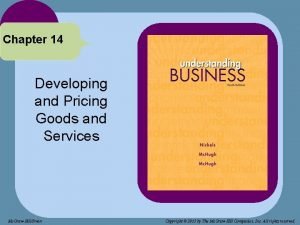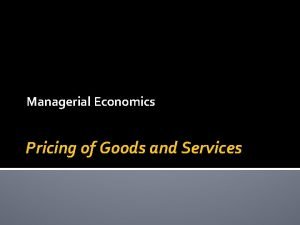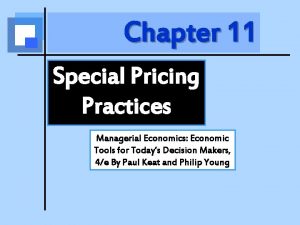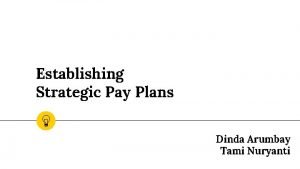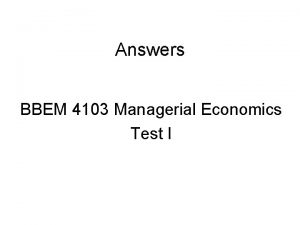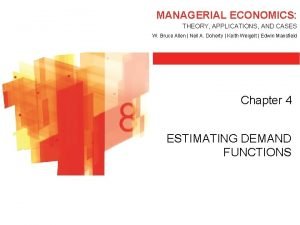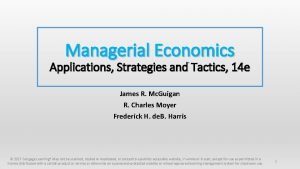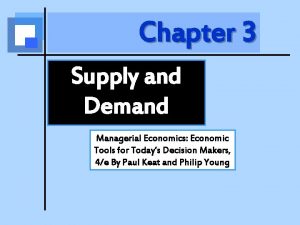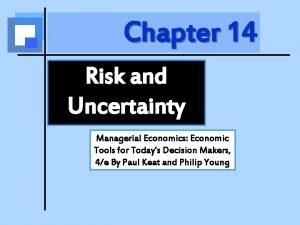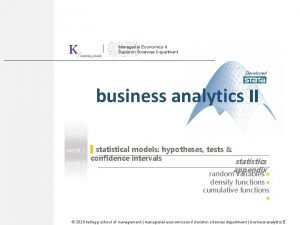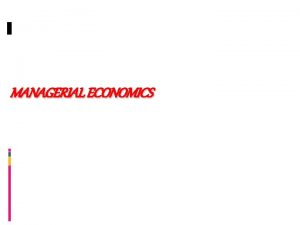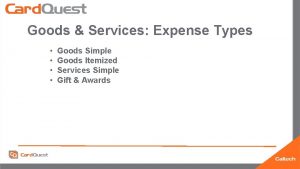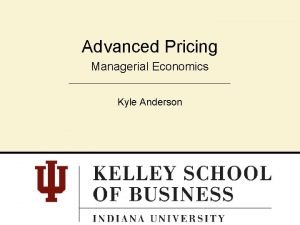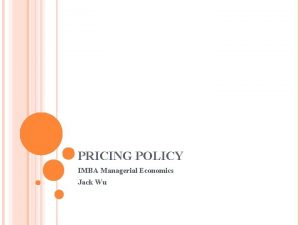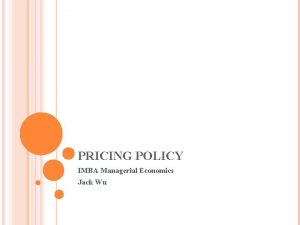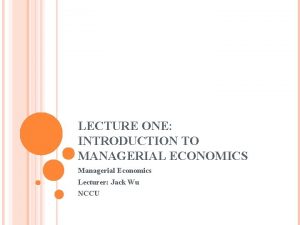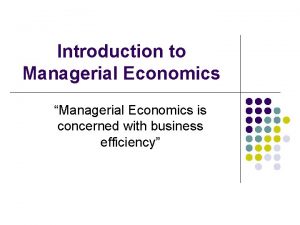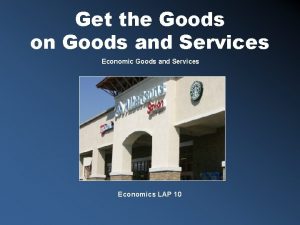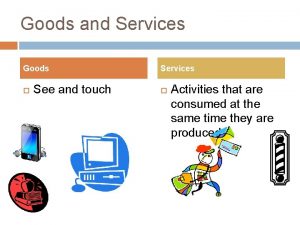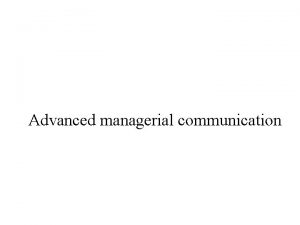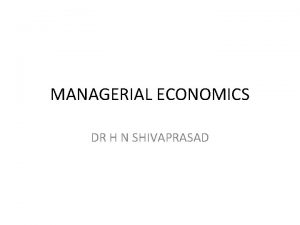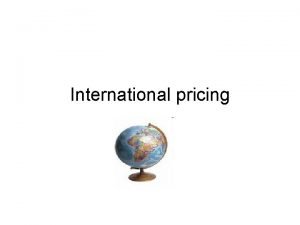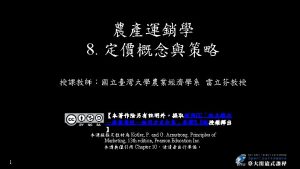Managerial Economics Pricing of Goods and Services Overview



















- Slides: 19

Managerial Economics Pricing of Goods and Services

Overview. Pricing of Multiple Products with interdependent cost pricing Joint Products Fully Distributed vs. Incremental Cost Pricing Ramsey Pricing Intermediate Products (Transfer Pricing)

What is pricing of multiple products Most of the firms are engaged in the production of two or more products simultaneously �A multiproduct firm faces separate demand functions for individual product �Cost of production of two goods is totally mixed up

Pricing of Multiple Products �Products with interdependent Demands � Example: Procter and gamble has different brands some are interdependent others not � Pantene and Head & shoulders are interdependent �In Unilever, Dove and Lipton are not.

Products with interdependent Demands For a two-product (A and B) firm, the marginal revenue functions of the firm are: First Part indicates that change in revenue for A is due to one unit increase in sale of A The second part indicates reflects demand interdependency which means that change in revenue of B due to one unit increase in sale of A e. g. automobiles with car lock, stereo system

Joint Products �When a firm produced goods in fixed proportions they should be thought of as a product package because there is no way to produce one part of this package without also producing the other part. �Example The process of producing beef and hides in a slaughterhouse

Joint products �MR = MC TOTAL �MR = MR + MR A B TOTAL

Joint Products in Fixed Proportions same production of both A and B Excess Production of A

Calculate the profit-Maximizing prices for joint products MC = 30 + 5 Q �BEEF �HIDES P = 80 – 2 Q MR = 60 – 2 Q P = 60 – 1 Q MR = 80 – 4 Q

Common Cost �Expense a firm incurs as a whole, and which cannot be assigned directly to any particular department, product, or segment of the business

Fully Distributed Costs Fully Distributed cost refers to distribution of common cost to all the units produce All common costs are distributed among the products and services of the firm. Then the price of each is set so that it covers the designated portion of common costs.

Example �Pakistan Railways have adopted fully distributed costing approach in costing of its services. Such costs include working expenses, interest and depreciation on capital and overheads. It is used for calculating the unit costs of transport services

Incremental Cost �Incremental cost is the cost associated with increasing production by one unit. Because some costs are fixed and other variable, the incremental cost will not be the same as the overall average cost per unit

Ramsey Pricing �If prices are to be increased, it is a good strategy to increase the markup on goods with the most inelastic demand, because consumers or users will buy them anyway.

Ramsey Pricing Py Elastic demand MCy Py Dy Qy’ Px MCx Px Dx Qx’ Qx In- Elastic demand Qy

Transfer Pricing �Pricing: - a firm with multiple divisions where each is treated as an autonomous profit centre. �Transfer the product at Market Price - where external market exists, transfer at P=MC - where external market is imperfect, behave like a discriminating monopolist MR = MC

Transfer Pricing External Market: �Market is perfectly competitive ( can buy or sell as much as they want at market determined price) �Enough alternate available in case if demand or price changes �Possibility a firm demand cannot be met because the market may not produce exactly

No External market MC AC P Q

Pricing Intermediate goods with No External Market MCw= MCp+MCt MCp MCt Pw Dw Pp MRw Qw
 Product classifications
Product classifications Total product offer
Total product offer Pricing methods in managerial economics
Pricing methods in managerial economics Transfer pricing in managerial economics
Transfer pricing in managerial economics Establishing strategic pay plans
Establishing strategic pay plans What is demand estimation
What is demand estimation Scope and nature of managerial economics
Scope and nature of managerial economics Meaning of managerial economics
Meaning of managerial economics Managerial economics questions and answers
Managerial economics questions and answers Definition managerial economics
Definition managerial economics Nature and scope of managerial economics
Nature and scope of managerial economics Engineering and managerial economics
Engineering and managerial economics Methods of cost estimation in managerial economics
Methods of cost estimation in managerial economics Managerial economics: theory, applications, and cases
Managerial economics: theory, applications, and cases Managerial economics applications strategy and tactics
Managerial economics applications strategy and tactics Determinants of demand in managerial economics
Determinants of demand in managerial economics Risk versus uncertainty
Risk versus uncertainty Managerial economics and decision sciences
Managerial economics and decision sciences Public goods vs private goods
Public goods vs private goods Merit goods vs public goods
Merit goods vs public goods

